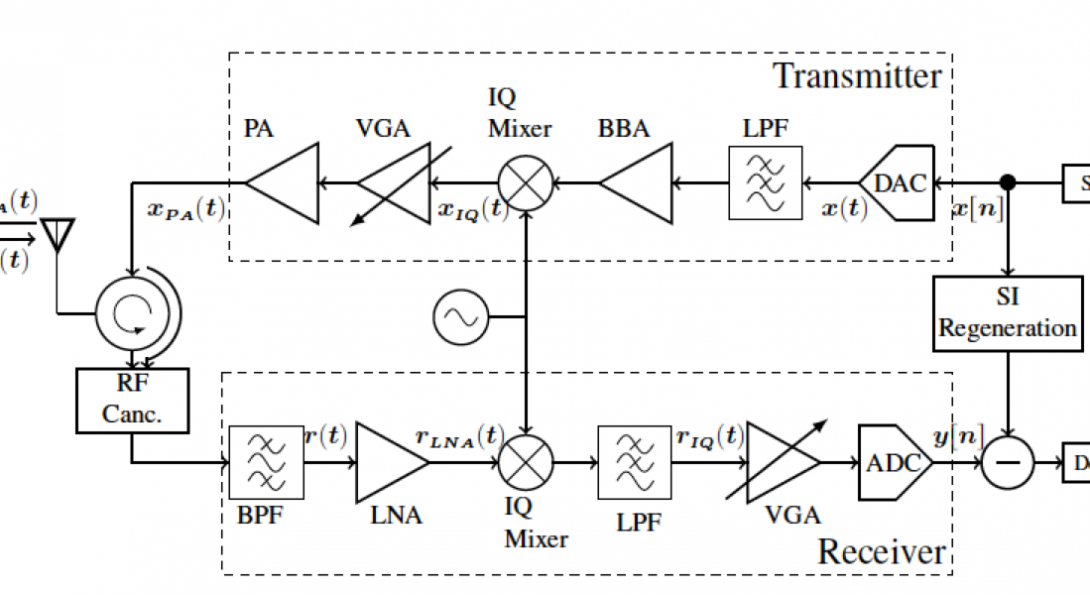A Comprehensive Self-interference Model for Single-antenna Full-duplex Communication Systems

1
Sponsors:
Problem Statement and Motivation
- Promoted by the popularity of small cell wireless systems, recent works have provided experimental evidence and methodologies for full-duplex communication.
- We aim to create highly reliable full-duplex wireless networks.
Technical Approach
- We improve full-duplex communication by reducing the self-interference.
- We offer a comprehensive SI model for single-antenna full-duplex systems based on direct-conversion transceiver structure considering nonlinearities of all the transceiver radio frequency (RF) components, in-phase/quadrature (IQ) imbalances, phase noise effect, and receiver noise figure.
Key Achievements and Future Goals
- M. A. Islam and B. Smida, “A Comprehensive Self-interference Model for Single-antenna Full- duplex Communication Systems,” Proc of IEEE ICC, Shanghai, China, pp.1- 7, May 2019.
